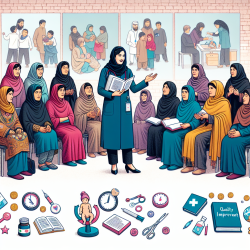Introduction
Midwifery education plays a crucial role in ensuring the health and safety of mothers and newborns. A recent study, "Quality of pre-service midwifery education in public and private midwifery schools in Afghanistan: a cross sectional survey," provides valuable insights into the current state of midwifery education in Afghanistan. By examining the infrastructure, management, curriculum, and clinical practice of midwifery schools, this study identifies both strengths and areas for improvement. This blog will explore how practitioners can leverage these findings to enhance their skills and contribute to the improvement of midwifery education.
Key Findings from the Study
The study assessed 29 midwifery programs using the Midwifery Education Rapid Assessment Tool. Here are some key findings:
- Infrastructure: 97% of schools had libraries, and 69% had active skills labs.
- Teacher and Preceptor Training: Only 69% of teachers were trained in teaching skills, and 54% in emergency obstetric and newborn care.
- Curriculum: 24% of schools used the national 2015 curriculum, with others using outdated versions.
- Clinical Practice: Students managed an average of 15 births independently, below the required 40.
Improving Midwifery Education
To enhance midwifery education, practitioners and stakeholders can focus on the following areas:
1. Curriculum Standardization
Ensuring all schools adopt the latest national curriculum is crucial. This will provide a consistent foundation for all students and ensure they meet the required competencies.
2. Teacher and Preceptor Development
Investing in continuous professional development for teachers and preceptors is essential. Training in modern teaching methodologies and emergency care will enhance the quality of education.
3. Enhancing Clinical Practice
Increasing opportunities for students to engage in clinical practice is vital. Schools should collaborate with clinical sites to ensure students can meet the required birth attendance numbers.
Encouraging Further Research
While this study provides a comprehensive overview, further research is needed to explore the long-term outcomes of midwifery education in Afghanistan. Practitioners are encouraged to engage in research initiatives that can provide deeper insights and inform policy decisions.
Conclusion
Improving midwifery education in Afghanistan is a multifaceted challenge that requires collaboration among educators, policymakers, and practitioners. By focusing on curriculum standardization, teacher development, and enhanced clinical practice, we can ensure that midwives are well-prepared to provide high-quality care. For more detailed insights, practitioners are encouraged to read the original research paper.
To read the original research paper, please follow this link: Quality of pre-service midwifery education in public and private midwifery schools in Afghanistan: a cross sectional survey.










